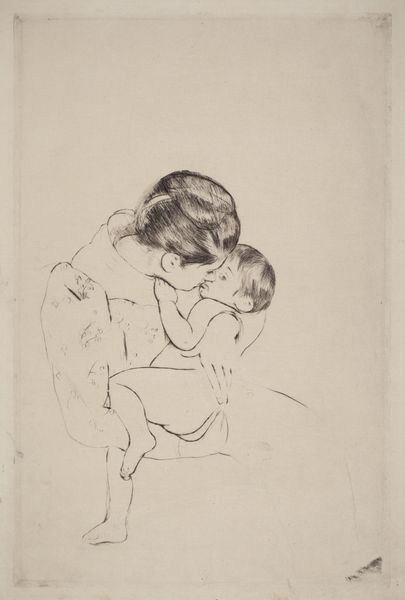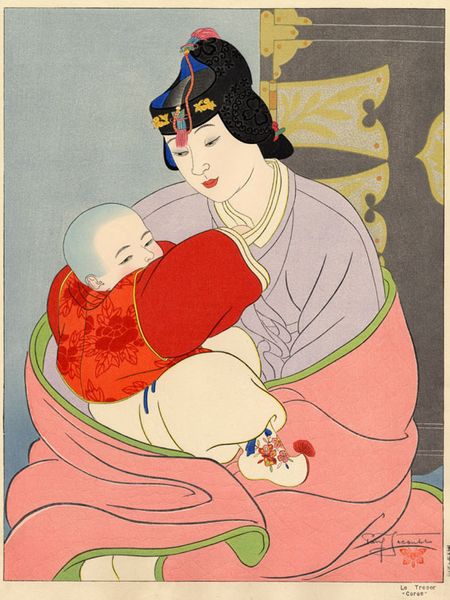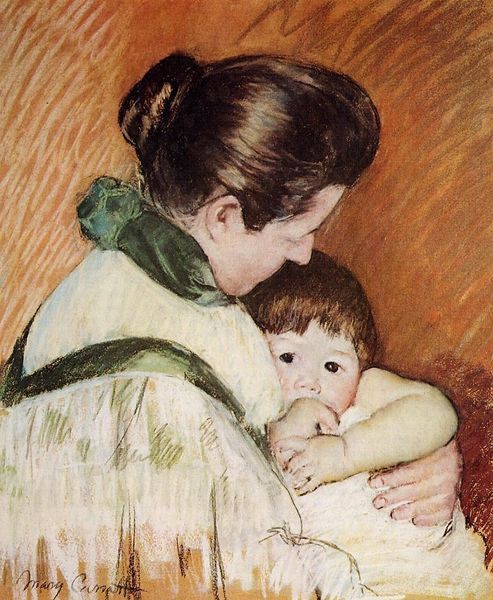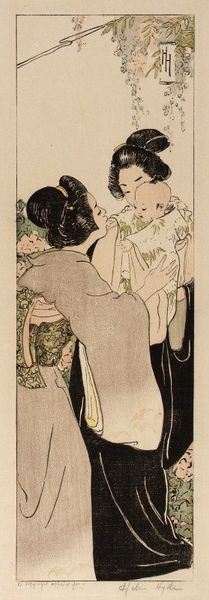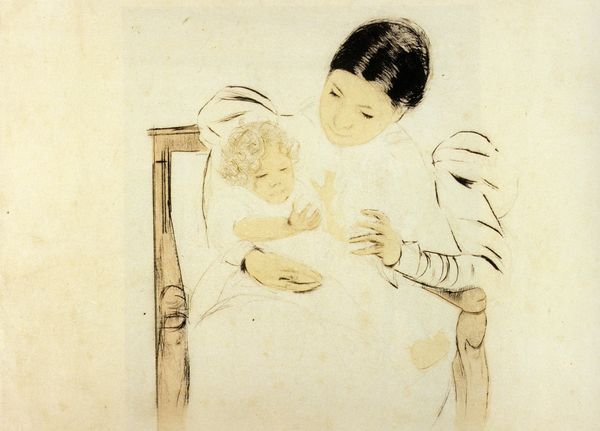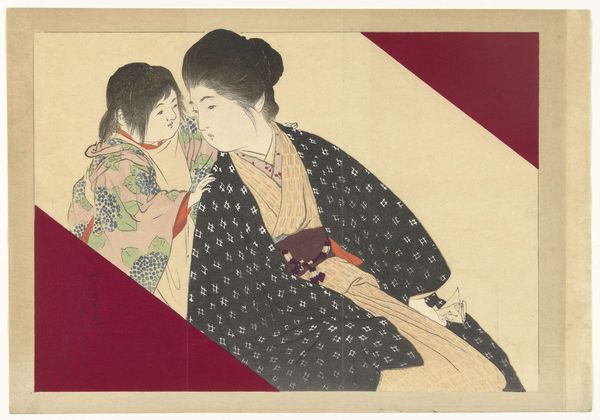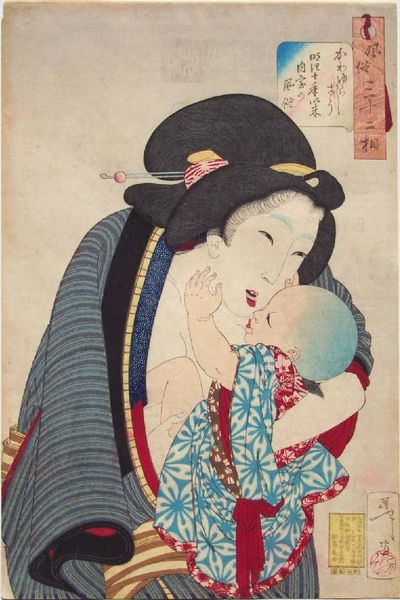
Copyright: Public domain
Editor: This is Mary Cassatt's "The Kiss," created in 1891. It's a watercolor and colored pencil work currently housed at the Art Institute of Chicago. The scene feels incredibly tender and intimate, focusing on the connection between mother and child. What stands out to you when you look at it? Curator: What immediately captures my attention is the social context surrounding Cassatt’s depictions of motherhood. While many of her male Impressionist peers were capturing Parisian street life, Cassatt deliberately chose to focus on the domestic sphere, an area often relegated as less significant in the art world. How might we interpret her choice to highlight these private moments of women's lives as a challenge to the established artistic norms of the time? Editor: That's fascinating! I never thought about her subject matter as a kind of rebellion. So, by depicting these intimate scenes, she's making a statement about the importance of women's experiences? Curator: Precisely. It's important to consider that museums and galleries were, and to some extent still are, spaces that validated certain narratives and artistic choices. Cassatt’s persistence in portraying women and children within these spaces served as a powerful declaration about the value and universality of their experiences. Notice also the Japanese print influences here; how did Cassatt adapt non-Western techniques for a Western audience, and did this alter their meaning in any way? Editor: I see that, like the flat planes of color! This makes me wonder how different audiences, then and now, might interpret these mother-child images? Curator: That's a crucial point to ponder. Early viewers, conditioned by academic traditions, might have viewed Cassatt’s impressionistic approach as unfinished. But from our contemporary perspective, we can appreciate her capturing everyday moments with such immediacy, heralding this move to challenge academic hierarchies in art. Editor: So much to think about! It's amazing to consider how the simple act of depicting a mother and child could be such a powerful social statement. Curator: Indeed! Examining art through a socio-historical lens truly enriches our understanding of the power of images and the complex interplay between art, society, and institutions.
Comments
No comments
Be the first to comment and join the conversation on the ultimate creative platform.


